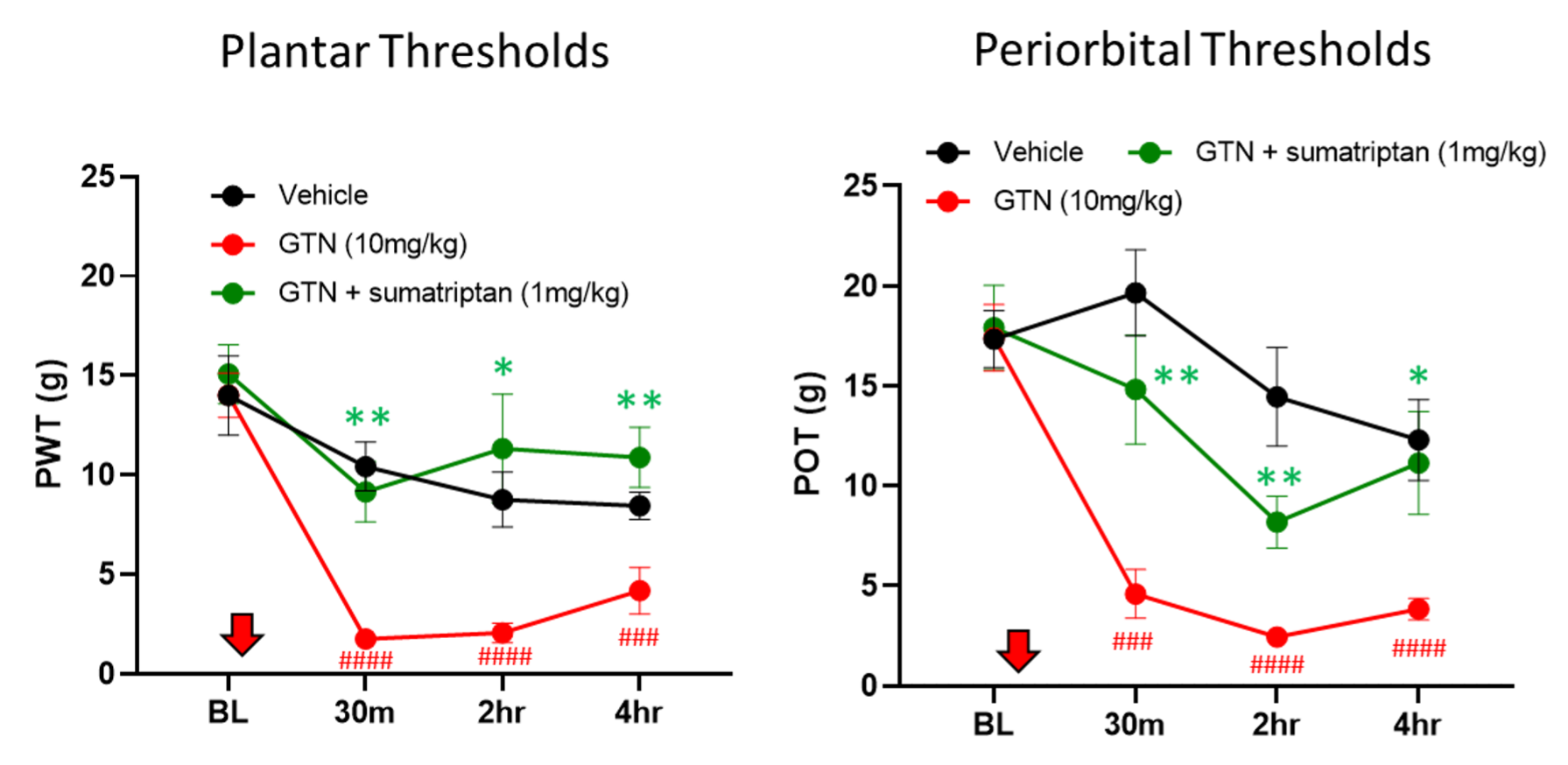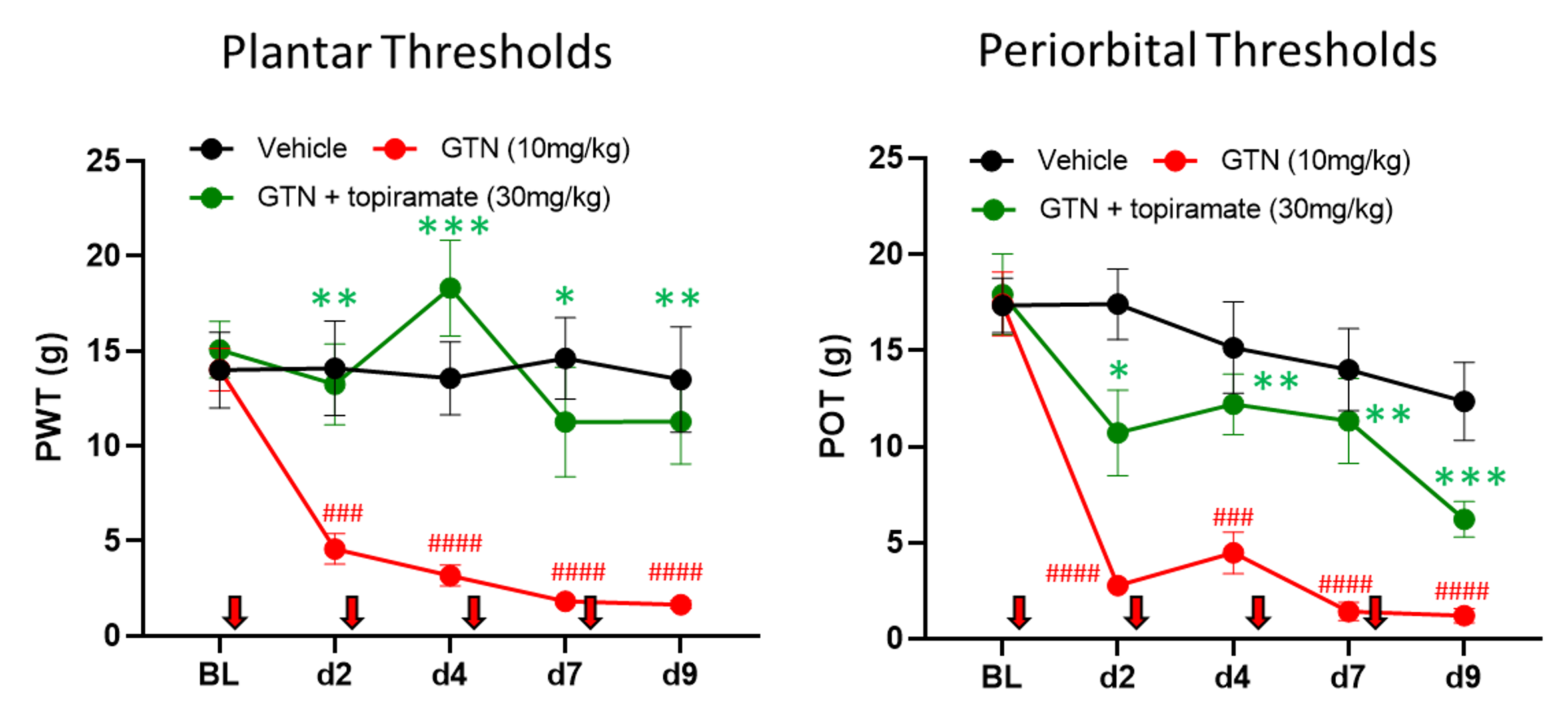Migraine
Migraine affects one in seven people worldwide and is characterized by recurrent, intense headaches often accompanied by nausea, visual disturbances, and sensitivity to light or sound 1. This debilitating chronic pain condition can result in decreased productivity, social withdrawal and depression 2. Research has pinpointed CGRP signalling as a key pathway in migraine, with CGRP targeting therapies showing promise as both acute and prophylactic treatments 3,4. Despite these advances, a significant fraction of migraineurs do not achieve sufficient pain relief 5, highlighting the need for development of further treatments.
Glyceryl trinitrate (GTN) infusion triggers episodes in 80% of migraineurs. This effect can be back-translated to animal models; GTN administration in rodents triggers spontaneous and evoked pain behaviours accompanied by hallmarks of trigeminovascular system activation including increased CGRP signalling, vasodilation, upregulation of markers of central sensitization and neuronal hyperexcitability 6. Importantly, GTN rodent models show face validity against clinically relevant migraine treatments.
A single GTN administration induces mechanical hypersensitivity that can be reversed by sumatriptan

Figure 1: Sumatriptan is analgesic in the acute GTN model. A single GTN injection (10mg/kg, i.p., red arrow) induced mechanical allodynia in both plantar and periorbital regions. Acute mechanical sensitivity could be reversed by sumatriptan (1mg/kg., s.c., dosed 1hr post-GTN) at 30min, 2hr and 4hrs.
Repeated GTN administration triggers a chronic migraine phenotype that can be prevented by topiramate

Repeated topiramate precludes development of chronic pain induced by prolonged GTN treatment. Prolonged GTN administration (4 x 10mg/kg over 7 days, i.p., red arrows) induced plantar and periorbital mechanical allodynia. Von Frey measurements on test days were conducted prior to GTN injection and thus capture chronic sensitivity. Development of mechanical allodynia is prevented by daily topiramate (30mg/kg, i.p.).
- Natoli JL, Manack A, Dean B, Butler Q, Turkel CC, Stovner L, Lipton RB (2010) Global prevalence of chronic migraine: a systematic review. Cephalalgia 30:599–609. doi:10.1111/j.1468-2982.2009.01941.x pmid:19614702
- Buse DC, Rupnow MF, Lipton RB (2009) Assessing and managing all aspects of migraine: migraine attacks, migraine-related functional impairment, common comorbidities, and quality of life. Mayo Clin Proc 84:422–435. doi:10.1016/S0025-6196(11)60561-2 pmid:19411439
- Goadsby PJ, Holland PR, Martins-Oliveira M, Hoffmann J, Schankin C, Akerman S (2017a) Pathophysiology of migraine: a disorder of sensory processing. Physiol Rev 97:553–622. doi:10.1152/physrev.00034.2015 pmid:28179394
- Goadsby PJ, Reuter U, Hallström Y, Broessner G, Bonner JH, Zhang F, Sapra S, Picard H, Mikol DD, Lenz RA (2017b) A controlled trial of Erenumab for episodic migraine. N Engl J Med 377:2123–2132. doi:10.1056/NEJMoa1705848
- Ong JJY, Wei DY, Goadsby PJ (2018) Recent advances in pharmacotherapy for migraine prevention: from pathophysiology to new drugs. Drugs 78:411–437. doi:10.1007/s40265-018-0865-y
- Tsantoulas C, Ng A, Pinto L, Andreou AP, McNaughton PA (2022) HCN2 Ion Channels Drive Pain in Rodent Models of Migraine. J Neurosc 42 (40), 7513-7529. doi: https://doi.org/10.1523/JNEUROSCI.0721-22.2022